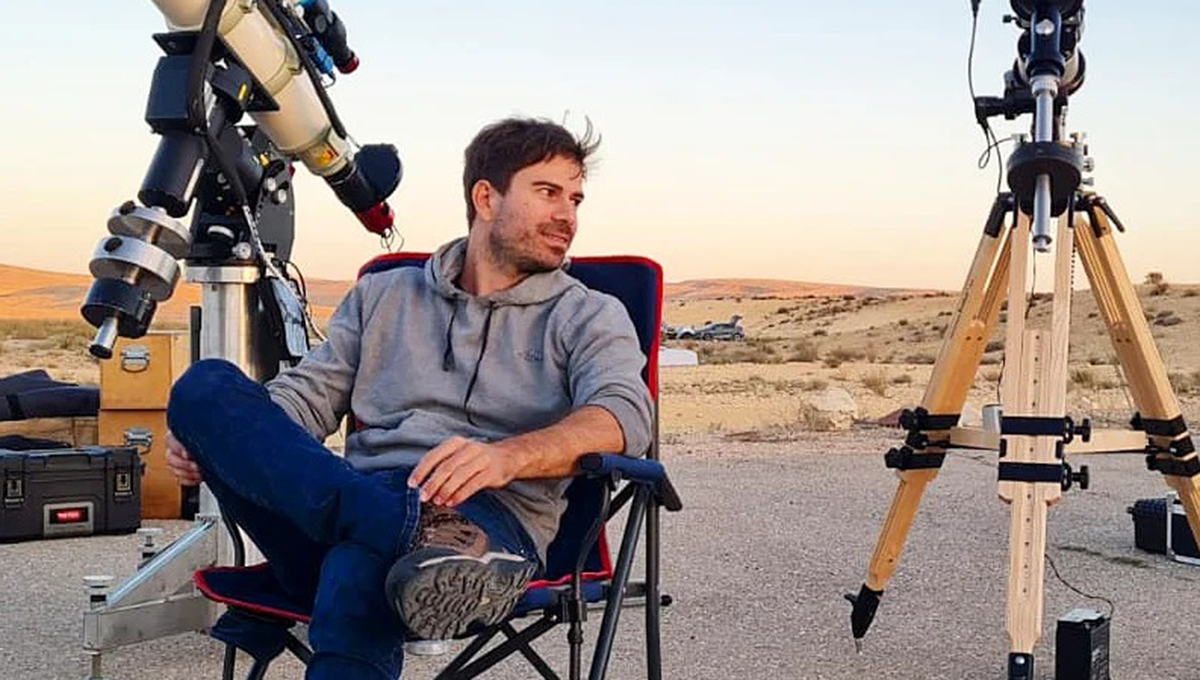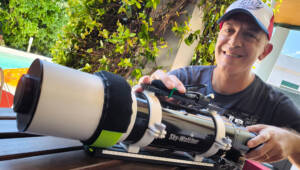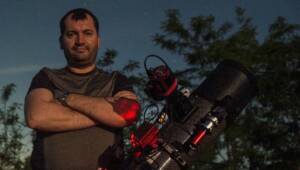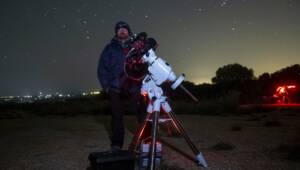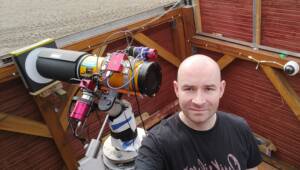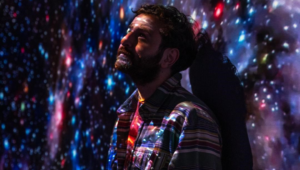Hello Yann, thanks for accepting our interview invitation. Congratulations on winning the ASIWEEK competition in week #31/2023!
Q1: At first, congratulation that your nice image won #ASIWEEK. This is actually your second interview with us, can you introduce yourself to new readers?
I am Michael Tzukran, an astrophotographer and the manager of the Optical Ground Station at the University of Tel Aviv, Israel. Through my passion for astrophotography, I capture the breathtaking beauty of the night sky, while overseeing a state-of-the-art facility for laser communication and satellite imaging.

Q2: How have your thoughts on astrophotography shifted in the last two years?
My primary focus revolves around satellite photography, which I find particularly intriguing due to its inherent technological challenges. Developing a system capable of effectively tracking swiftly moving objects is undoubtedly a complex endeavor. However, I am also highly enthusiastic about delving back into the realm of astronomical photography.

Q3: Can you tell us about the winning photo?
The Chinese space station offers a captivating subject for photography. Currently, it is nearing the completion of its construction phase in space. Capturing an image of the space station revealed several discernible details of its various systems. For this particular shot, I utilized a 610mm mirror telescope along with a planetary camera to achieve the desired level of clarity and precision.

Q4: What preparations are needed before shooting the space station? What are the difficulties in the shooting process?
Ensuring the seamless operation of the entire system and its ability to track and lock onto the space station is crucial. During the brief window when the station passes by, numerous factors can potentially disrupt the process like balance, software errors, calibration, weather and so on… To mitigate any potential issues, I need to practice on other satellites. Murphy’s law is the baddest of them all.
Q5: What gear do you use? Any pictures of them?
For that particular image, I employed a CDK 600 Planewave system with an ASI290MM. To enhance the clarity and precision of the image, I utilized custom software solutions and tailored mechanical components. These additions allowed me to achieve the desired level of sharpness and detail in the final result.

Q6: Why do you show a preference for the space station as a target? What other targets do you tend to photograph?
The main reason is the size of the object, the bigger the better, I can get a lot of details.
Hubble space telescope and research satellites are on my list.
Q7: How do you normally do post-processing? Would you like to share with us your workflow?
I take couple of images and stack them together, and using sharpening masks to bring up the details.

Q8: Is there any memorable story you can share with us from your astrophotography days?
There was an incident when I arrived at an observation post in the desert, unaware that a military exercise was scheduled to take place there. Within a short span of 20 minutes, soldiers swiftly surrounded me and my equipment. They informed me that helicopters were due to land soon and advised me to evacuate. However, faced with the challenge of disassembling my heavy equipment in such a limited time, I insisted on staying. As the helicopters landed just 20 meters away, they kicked up dust and stones, creating a chaotic environment. In a moment of quick thinking, I rushed to retrieve blankets and used them to cover my equipment. Thankfully, the blankets provided adequate protection, allowing me to resume my work once the situation had settled. From this experience, I learned the importance of always carrying blankets as a practical precautionary measure.
Q9: How did astrophotography affect you when it went from a hobby to a job?
At the observatory, my primary focus is capturing satellite photographs and conducting experiments related to laser communication. While this work differs from traditional astronomical photography, it entails specific responsibilities and obligations. However, I must admit that there are moments when I miss the serene experience of photographing celestial objects in the desert. Shooting astro in such a tranquil environment provides a more relaxing and rejuvenating experience.

Q10: What do you consider to be your highlight moment in astrophotography?
After putting in considerable effort, obtaining a high-quality picture brings me tremendous satisfaction. It serves as a rewarding culmination of my endeavors. However, if I don’t achieve the desired outcome, I do feel a sense of disappointment. Nonetheless, I find solace in the knowledge that every experience, whether successful or not, presents an opportunity for growth. If I can learn something from the process that can be improved upon in the future, it brings a sense of comfort and motivates me to further enhance my skills and techniques.

Q11: What advice do you have for people who are new to astrophotography?
I strongly recommend aspiring photographers to prioritize deepening their knowledge and understanding. Mastering the fundamentals of photography lays a strong foundation for further growth. It’s important to avoid the temptation of constantly jumping from one product to another based on hearsay about their superiority. Instead, I encourage photographers to fully explore and maximize the potential of the equipment they currently possess before considering any upgrades or changes.

Q12: When did you start using ZWO’s products and do you have any suggestions for us?
My photography journey began with an ASI120MM camera so that was a long time ago. I now own over 14 cameras, with two more on the way. I recommend exploring extreme frame-rate cameras for planetary photography.

